Insight: A Scots grave leads to fascinating story of a forgotten suffragette
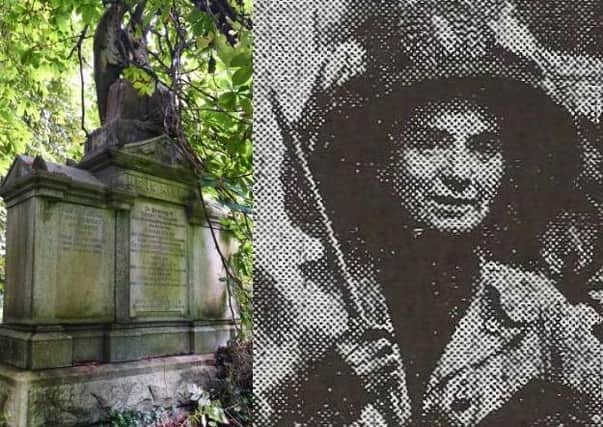

There, you will find a large granite grave: a triple lair with the words He is Risen embossed on the middle panel. The angel on top is only partially visible, trapped behind leaves; smote by a mighty arboreal limb. But position yourself directly below, and you can see she stands undaunted: her face set against the elements, her right arm, cut off at the elbow, raised defiance of mortality.
It’s an impressive Victorian tomb in a graveyard full of them. But only in the last few weeks has its full historical significance come to light. Because trace your finger down the weathered names of its occupants – all members of the Williams family – and you come to this: “Their daughter Henria Helen Leech. Born 6th January, 1867, died 2nd January, 1911.”
Advertisement
Hide AdAdvertisement
Hide AdHenria Leech Williams was a suffragette. More than that, she was one of the very few who died in pursuit of the cause. She was one of 300 women who marched to the Houses of Parliament on Black Friday – November 18, 1910 – to demand their voting rights after the collapse of the Conciliation Bill.
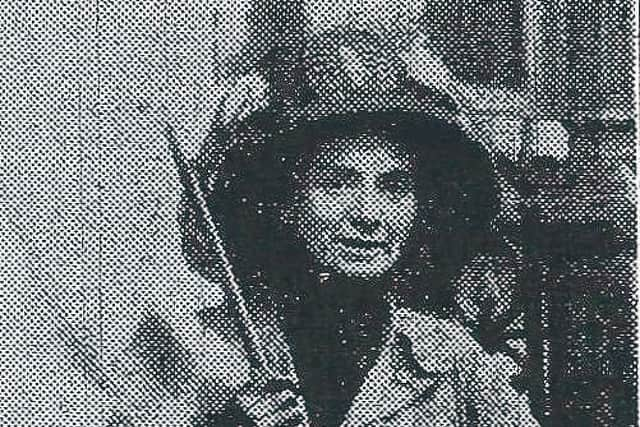

Black Friday is notorious in the history of the suffragette movement for the sexualised brutality meted out by the police, and Henria was in the thick of it. At the time she recorded how, having knocked her about for a considerable time, a police constable “finally took hold of me with his great strong hands like iron over my heart. He hurt me so much that at first I did not have the voice to tell him what he was doing, but I knew that unless I made a strong effort to do so, he would kill me.”
A male protester, Frank Whitty – a gentleman’s outfitter from Sidcup – tried to persuade her to leave, but she refused, so he did his best to protect her, “warding off blows, kicks and insults from her fainting body”.
Henria was not arrested, and returned to her home in Upminster. But she suffered from angina and had taken part in the protest aware that to do so could imperil her health. She took ill and died on January 2. Her brother Llewellyn – who supported her campaigning – wrote: “She knowingly and willingly shortened her days in rendering services to the womanhood of the nation.”
Henria has lain in the southside of Glasgow for more than 100 years, unacknowledged even by the Friends of Cathcart Cemetery (of which, for the sake of transparency, I am a member). Her presence there was unearthed by Ian McCracken, who has been researching Scottish connections to the movement for the artist-led organisation Protests and Suffragettes and stumbled across the information via an English website.
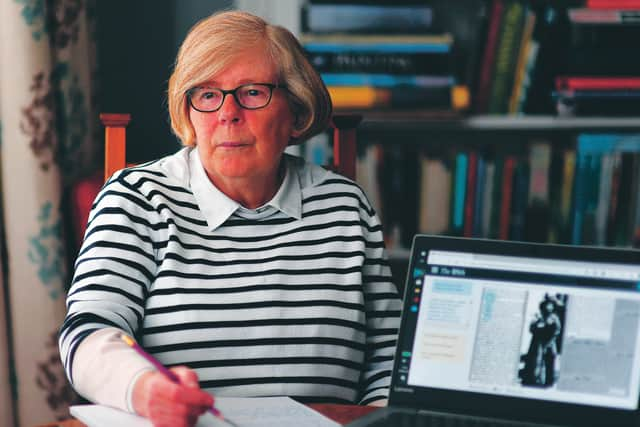

The discovery was the source of great excitement, both for the cemetery group and for those invested in the history of radical feminist campaigners. But it raised as many questions as it answered: why was Henria – who lived in London – buried in Glasgow? What links did she have to the city? And how was her quasi-martyrdom marked at the time?
Beverly McFarlane, who volunteers at the Glasgow Women’s Library, offered to help me investigate. Using websites such as Scotland’s People and Ancestry.Com, she was able to chart a timeline from birth to death. And what she discovered was amazing.
Like many of the suffragettes, Henria, who was born in Oswestry in Shropshire, came from wealthy stock. Her father Henry, an engineer, and mother Henria, a school mistress, lived for a long time in Nantwich, Cheshire, before moving to Cathcart between 1881 and 1885. There, Henry established the Henry Williams Railway Appliance Works.
Advertisement
Hide AdAdvertisement
Hide AdIn the 1891 census, the couple are recorded as living in Albert Road with their eight children, including Henria , who would have been 24 by then. They must have thrived because, by the time Henria senior died, a widow, in 1904, she owned stocks and shares in several railway companies and South African diamond mines.
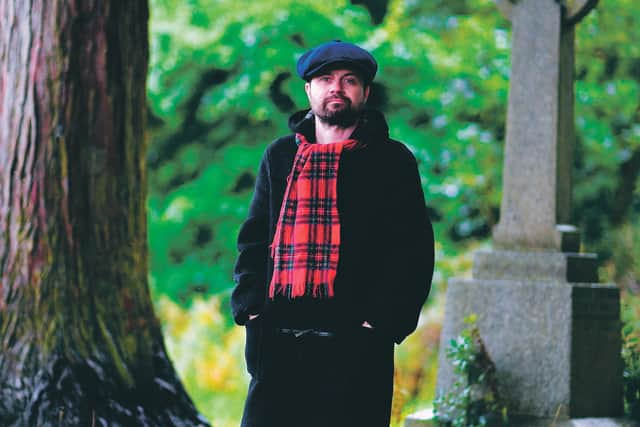

“One intriguing feature of Henria’s will is that it stipulates money left to her daughters was to remain outside the control of any future husbands, which suggests she too was a feminist,” says McFarlane.
She is sitting in a cafe, her laptop open, running through everything she has found. Henria did not go on to marry. By the 1901 census, she was a “boarder living on her own means” at The Peak Hydro, Buxton, Derbyshire. “Perhaps her heart condition had begun to manifest itself and she had gone there to restore her health,” McFarlane speculates.
Despite her ailments, Henria threw herself into the suffragette movement. Records show she was held in Bow Street prison on July 9, 1909 – an event likely linked to a mass rush on parliament a fortnight earlier, which saw 108 women arrested, 15 for smashing windows.
Then came Black Friday. Her obituary notes: “She showed marvellous courage, but was terribly knocked about and came back to Caxton Hall [site of the famous Women’s Parliament] … with face and lips blackened by suffocation.”
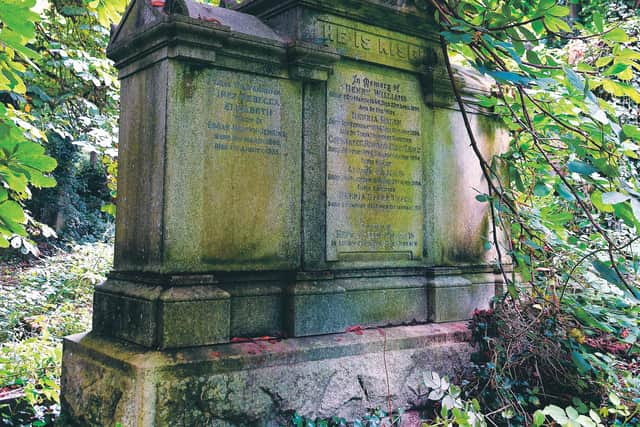

Henria was brought back to Glasgow to be buried in the family lair. She was given a proper hero’s send-off, with several members of the Women’s Social and Political Union (WSPU) in attendance – a rare occurrence, particularly in Scotland.
Perhaps the most interesting document uncovered by McFarlane is a first-hand description of Henria’s funeral by fellow suffragette Miss Underwood (probably Ruth, who would go on, some years later, to be charged with assaulting police officers) in the magazine Votes for Women.
“[It] was most touching and impressive,” she wrote. “Although you had written me that flags had been sent from Clement’s Inn, I do not think that any of us realised that we should see them in the church.”
Advertisement
Hide AdAdvertisement
Hide AdClement’s Inn was the London HQ of the WSPU, which means the flags came from the very top of the movement.
“For myself, I cannot describe the thrill I felt when the coffin was carried up the aisle covered with our purple, white and green. There were only two wreaths upon it, the one you sent from Clement’s Inn and a cross of green with white lilies and broad purple ribbon sent from the Glasgow Union.”
After a short church service, the funeral party drove to Cathcart Cemetery, where a second service was held by the open grave. “After the grave was filled in, I had a special privilege,” wrote Underwood. “It is the custom here for each mourner to place on the grave the wreath which she sent, and I was asked to place the suffrage wreaths on the grave.”
It is moving to stand, a century on, in the dank undergrowth, and picture the scene: Ruth stepping tremulously forward to pay tribute to her fallen comrade, as Henria’s brother looked on.
“As I stood by Mr Williams afterwards, he said, ‘This is quite a soldier’s funeral’,” Underwood wrote.“I answered, ‘It should be, she was as brave as any soldier’.”
The story of Henria Leech Williams is not the first to have been offered up by Cathcart Cemetery. A few years ago, journalist and author Peter Ross was daundering through the graveyard when he stumbled on a pink granite stone, half-hidden by a bush. It bore the simple inscription: “Mark Sheridan. Comedian.”
“The information was so basic and yet so tantalising,” he says now. “I just wondered, ‘Who is that?’”
Ross went home and Googled him. He discovered Sheridan was a music hall star who wore heavy make-up, bell bottoms and an oversized bowler hat. His popular recording of I Do Like to Be Beside the Seaside is the reason we all know the song today. It is Sheridan’s voice that can be heard singing it at the end of Queen’s Seven Seas of Rhye.
Advertisement
Hide AdAdvertisement
Hide AdSo far, so interesting. But there was more. Like Henria, there was no obvious reason why the comedian, from County Durham, should have ended up in Cathcart. So Ross took himself to the Mitchell Library, where he tracked down old news reports of Sheridan’s death. It turned out he had killed himself in Kelvingrove Park shortly after his burlesque show, Gay Paree, opened at the Coliseum on Eglington Street in 1918. Sheridan’s suicide may have been prompted by bad reviews, though his wife claimed it was an accident.
Ross had always been fascinated by graveyards. As a child he spent a lot of time in the Old Town Cemetery in Stirling – where his grandparents lived – trying to catch tadpoles in a pond called the Pithy Mary, and looking at the graves.
“I thought were very beautiful, these 18th century stones, and they had skulls on them and I used to love all that stuff,” he says, “but it’s also true to say that one of the ways I learned to read was from looking at unfamiliar words and phrases, like ‘unto’ and ‘remembrance’ and ‘Suffer Little Children’.”
The cemetery sparked an early love of language, but also of stories. “Some of the names were quite old-fashioned, like Ebeneezer, and stimulated questions: Who were these people? How did they live? How did they die?”
Around 13 years ago, Ross moved to a house close to Cathcart Cemetery and found himself drawn to it. He started walking there, first casually, and then as a “morning commute”, taking his younger son to primary school. But discovering Sheridan’s grave brought an epiphany.
“That was the moment I realised graveyards were essentially repositories of stories – that what was true of Cathcart must be true of graveyards across the whole country, and that there was probably a book in it,” he says.
That book – Tomb with a View – will be published on Thursday. In it, Ross takes the reader on a journey through some of those cemeteries: from Highgate and Crossbones in London to Milltown in Northern Ireland and Flanders Field, excavating buried tales, jolting new life into old bones. Lovers, outcasts, mavericks, lost babies, lost soldiers and “witches” roam its eldritch pages, ensconcing themselves in our imaginations.
Tomb with a View taps into a growing interest in graveyards – an upsurge in taphophilia or tombstone tourism – which appears to have been further fuelled by the pandemic. During lockdown, images of cemeteries have proliferated on social media. When Ross tweeted a thread on one of his favourite Cathcart graves – that of the architect William Gardner Rowan – it garnered more than 100 responses and 1.8k likes.
Advertisement
Hide AdAdvertisement
Hide AdSo what is the attraction of religious resting places in a secular age? “I think older cemeteries offer a lot of different things,” says Ross. “Firstly, they are visually and intellectually stimulating. If a cemetery has older stones, say from the 17th, 18th century, then the symbolism is very attractive – all those cherubs and hour glasses and grinning skulls, blackened with soot and time.
“But even if the cemetery is Victorian, it will probably be quite rundown, and that taps into a long-standing British taste for ruins. I don’t think we can underestimate the shivery pleasure of decay.”
Graveyards are highly Instagrammable; photographs of crumbling monuments can be taken and shared with other enthusiasts. But Ross believes there is something deeper going on too. “It’s sometimes said that people watch horror films because it’s a way of experiencing fear in safety,” he says. “I think cemeteries are probably the same, but for grief, for fear of death. So if you are walking in a graveyard, it is a way of confronting and processing those strong negative emotions without being personally affected by them. I think of it in terms of vaccination. We expose ourselves to a particle of darkness and by doing that, we don’t actually sicken with it.”
This would explain why graveyards became so popular during lockdown. “There were many tragic losses, but by walking in a cemetery among those generations of the dead, you could come to some sort of acceptance and a feeling of solidarity: that this was a human experience many people had gone through in the past.
“I think there was something comforting in that, something almost neighbourly – a feeling of an arm around the shoulder, of being embraced by wise and experienced elders who had seen and felt it all before.”
Jonathan Tremlett, co-chairman of Friends of Cathcart Cemetery, is hoping this growing desire to commune with the dead will help revive the graveyard’s fortunes. Cathcart is – as Ross writes – “the least celebrated of Glasgow’s historic cemeteries”, less dramatic than the Necropolis, with its “huge glowering effigy of John Knox” and lacking the “disquieting air of urban gothic” that characterises the Southern Necropolis.
It is, by any measure, neglected. And though its tumbledown nature is part of its charm, wandering its wilder paths can make you feel like Prince Charming slashing through Sleeping Beauty’s thickets of thorns.
Lockdown saw a rise in littering, with drinkers congregating at the top of the hill . There have been safety concerns too, with some of its less stable stones pulled down for fear they might topple over.
Advertisement
Hide AdAdvertisement
Hide AdThe Friends group is trying to raise awareness of the cemetery’s most interesting inhabitants, the theory being that the more people who recognise its historical value and are invested in its fate, the more likely it is to be protected.
Tremlett has already created a Google map app with 46 graves. Users can follow the trail, looking at pictures and reading background information as they go; another 19 map items are under construction, with Henria’s grave due to be added today.
“I saw the Friends of the Southern Necropolis had created a Google map, and I thought it was a great idea,” Tremlett says. “When we started, I thought we’d be lucky to reach 10, but the stories just kept on coming.”
All walks of life are represented here: millers, merchants and ministers; weavers, welders and wordsmiths. And soldiers. At the main entrance, a Cross of Sacrifice marks Cathcart out as a cemetery containing more than 40 Commonwealth war graves – in fact, there are 243 war dead.
The first manager of Celtic, Willie Maley, and the first manager of Rangers, William Wilton, both lie in the graveyard, the religious divide bridged in death. So too does Hugh MacColl, a marine engineer, credited with bringing football to Spain and founding Seville’s club.
Sculptor Hannah Frank, who lived to be 100, and Eric Woolfson of The Alan Parsons Project, are both buried in the Jewish section, while, earlier this year, someone laid a white cross and small sign on the grave of Stan Laurel’s mother, which had previously gone unmarked.
But even some of the most prominent monuments are in need of restoration. The cross that marks the grave of Jessie MacLachlan – a world-renowned Gaelic soprano, who sang for Queen Victoria at Balmoral – is currently lying flat. “The ivy is in danger of taking over some of the stones too,” Tremlett says.
His association with Cathcart is personal. After moving from Northern Ireland to Dundee and then Glasgow to study, he decided to research his Scottish roots. He finally tracked down the graves of his great-great-grandparents, John and Margaret Beattie, to the cemetery in January 2018. A few months later, he went on a tour, conducted by a member of the Alexander Thomson Society, and met John Shelton, his co-chairman, who was trying to attract recruits to the recently-founded group.
Advertisement
Hide AdAdvertisement
Hide AdNow properly constituted, the Friends of Cathcart Cemetery has conducted a users’ survey and hopes to work with East Renfrewshire Council, the authority responsible for its upkeep, to bring the place back to a better state of repair.
“I don’t think the vision is to put Cathcart cemetery back the way it was 100 years ago,” he says. “We want to preserve it, not restore it. “
Ross agrees. “I am attracted to the fact the graveyard is rundown. Aesthetically I like the ivy and the broken angels, but I think it is probably reaching a tipping point,” he says.
“So I’d like some of the stones that have fallen to be lifted and secured, and, certainly, for the ones that have fallen on their faces to be turned round so their names can be read; because once your name is gone – that’s when you are forgotten.”
News of the discovery of Henria Leech Williams’ grave is generating a frisson of excitement as it spreads around feminist circles, with everyone keen to reclaim a woman at the centre of the fight for equality.
Protests and Suffragettes – the organisation that first stumbled across her – is currently crowdfunding to produce playing cards and schools resources featuring suffragettes with Scottish connections. Perhaps Henria could be featured in the deck?
The priority, however, is for the branches to be cut from in front of the grave, and the path cleared, so it can be accessed and viewed.
Last week, a spokesman for East Renfrewshire Council, said: “It’s fantastic this significant piece of history has been discovered and we will work closely with the Friends of Cathcart Cemetery to support its restoration.
Advertisement
Hide AdAdvertisement
Hide Ad“An initial inspection of the gravestone has been carried out and this will now be considered as part of a wider programme of works within the cemetery.”
Once this has been achieved, the Glasgow Women’s Library would like to hold some sort of ceremony.
“Henria was new to me,” says senior manager Sue John. “We are learning all the time because of women’s history being so hidden.
“I think it’s our feminist and historic responsibility to mark her in some way. Perhaps we could dig out our suffragette rosettes and visit with our ribbons on the anniversary of her death. She deserves it, doesn’t she, having lain there unacknowledged all this time.”
In the meantime, what other mysteries does Cathcart Cemetery hold? Last week, strolling at dusk amongst the flitting bats, I peered through high grasses at ramshackle monuments wondering which of them had secrets to tell.
“Finding a fruitful grave is like taking a great book off a library shelf after many years,” Ross says. “You blow the dust off it, you open it up and there the story is, laid out before you.”
Comments
Want to join the conversation? Please or to comment on this article.